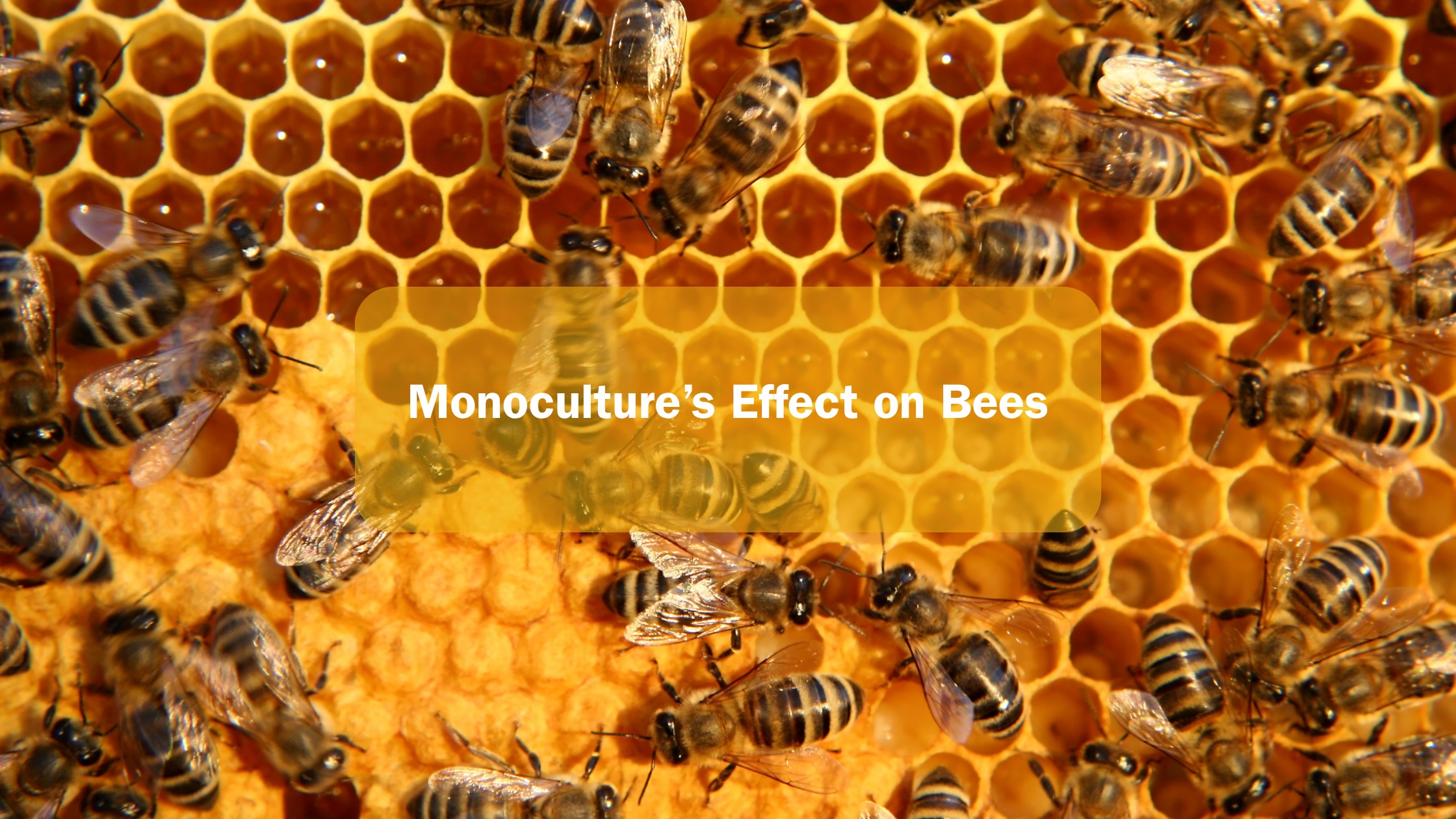Monoculture’s Effect on Bees
By Abby Bassier

Introduction
Bees are dying at an alarming rate. According to the Bee Informed Partnership 40% of honeybee colonies died in the 2019 winter. This survey reflected responses from 4,700 beekeepers of about 320,000 colonies. (1) Colony Collapse Disorder is the broad term used to explain these deaths.
Colony Collapse Disorder has three main causes: illness, pesticides, and monoculture. (2) These causes are interconnected and monoculture is at the center. Monoculture provides bees with one nutrient source which results in poor bee health, increased transportation of hives, increased use of pesticides on crops and stress to search for diversity in food. It is imperative to increase crop diversity in order to decrease bee colony deaths. It is important for dietitians to be aware of this problem because the majority of our fresh foods rely on pollination to grow.
Counterargument
General feeding requirements for bees include: carbohydrates, protein, fat, vitamins, and minerals although mature honey bees can survive on carbohydrates alone. Bees are able to consume all essential nutrients from supplemental feeding programs which eliminates the need for diversity in agriculture. Honeybee colonies are often fed a supplement in the winter and early spring before nectar and pollen are available in nature but this could be used universally.(3)
Argument
Supplemental feeding programs do not provide bees with all they need. Bees are complex organisms that thrive with a diverse diet that is not achieved with supplemental feedings or monoculture. Pesticides and illness are the two other causes of Colony Collapse Disorder. (2) Mono-cropping creates an increased need for pesticide use which is detrimental to bee health. A lack of diversity in nutrition results in poor immune health which makes them more susceptible to pesticides and viruses.
Another effect monoculture has on bees is the need for hive transportation. Each year there is an increase in pollination dependent crops; about two-thirds of honey bee colonies are transported across the country to pollinate crops each year.(4) There are not enough beekeepers to keep up with the increasing demand for farmed bees. The stress and vibrations from transportation can result in bee death. (5) This is an unnecessary process if there were diversity on farms to sustain bees throughout the year.
Conclusion
Monoculture is causing Colony Collapse Disorder resulting in a decrease of colonies and an increase in bee death. There are ways this issue can be improved including: encouraging diversity in crops, starting a home garden, supporting local beekeepers, and creating new policies for farmers who mono-crop. It is important to make changes to protect bees and our current food system. Dietitians should advocate for bees because it will affect what they are able to recommend for clients and patients in the future.
References
- Neilson, S. (2019).More bad buzz for bees: record number of honeybee colonies died last Retrieved October 08, 2020, from https://www.npr.org/sections/thesalt/2019/06/19/733761393/more-bad-buzz-for-bees-record-numbers-of-honey-bee-colonies-died-last-winter
- Williams, Geoffrey R, et al. (2010). “Colony collapse disorder in context.” BioEssays: news and reviews in molecular, cellular and developmental biology, WILEY-VCH Retrieved October 08, 2020 from https://www.ncbi.nlm.nih.gov/pmc/articles/PMC3034044/
- Standifer, L., Moeller, , Kauffeld, N., Herbert, E., & Shimanuki, H. (2020). Supplemental feeding of honey bee colonies. Retrieved October 08, 2020, from https://www.beesource.com/threads/supplemental-feeding-of-honey-bee-colonies.365866/
- Honey bees are pollinators. (n.d.). American Beekeeping Federation. Retrieved October 08, 2020, from https://www.abfnet.org/general/custom.asp?page=PollinatorFacts
- Jabr, F (2013). Mind-boggling math of migratory beekeeping. Scientific American. Retrieved October 08, 2020, from https://scientificamerican.com/article/migratory-beekeeping-mind-boggling-math/
